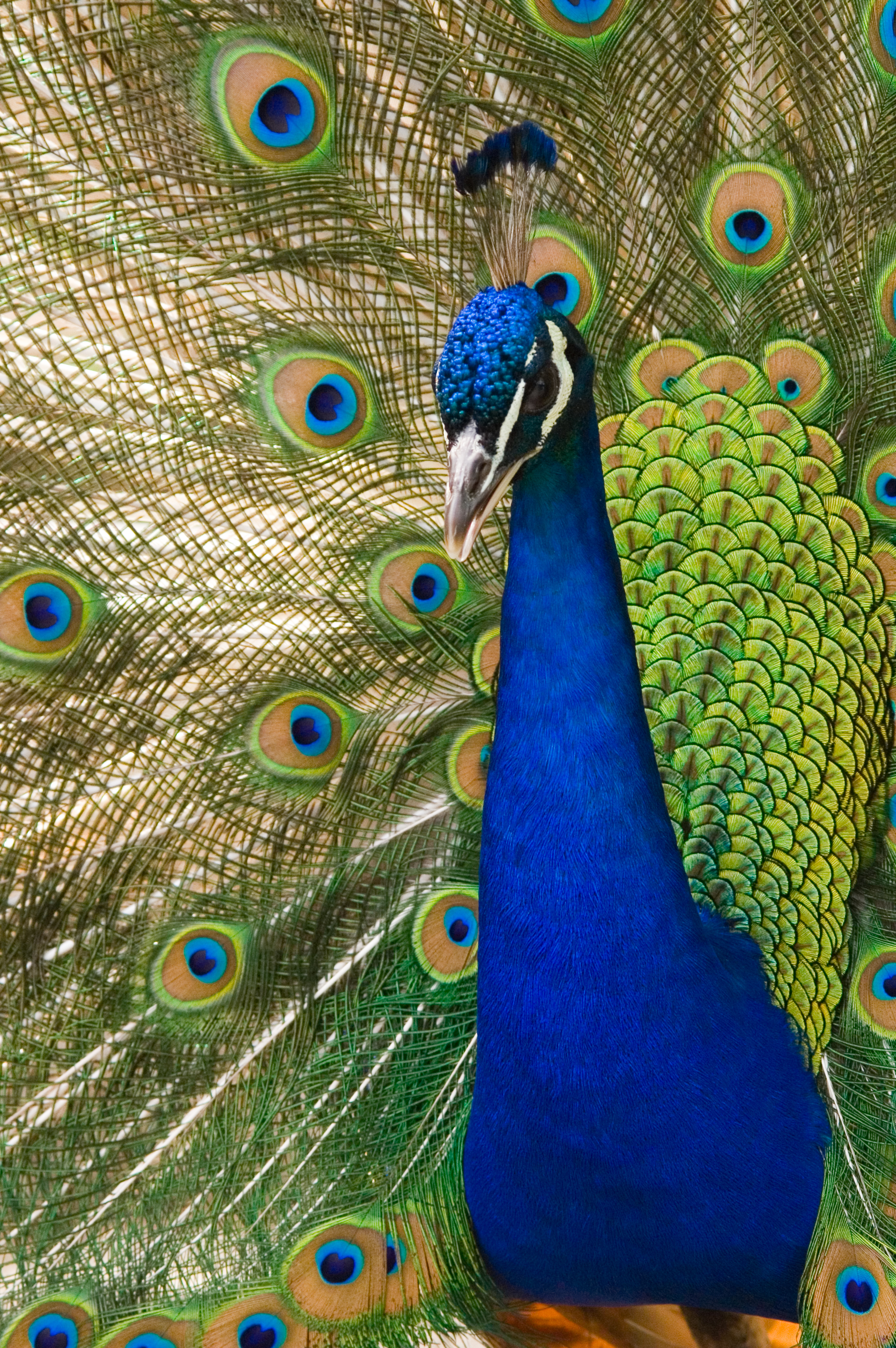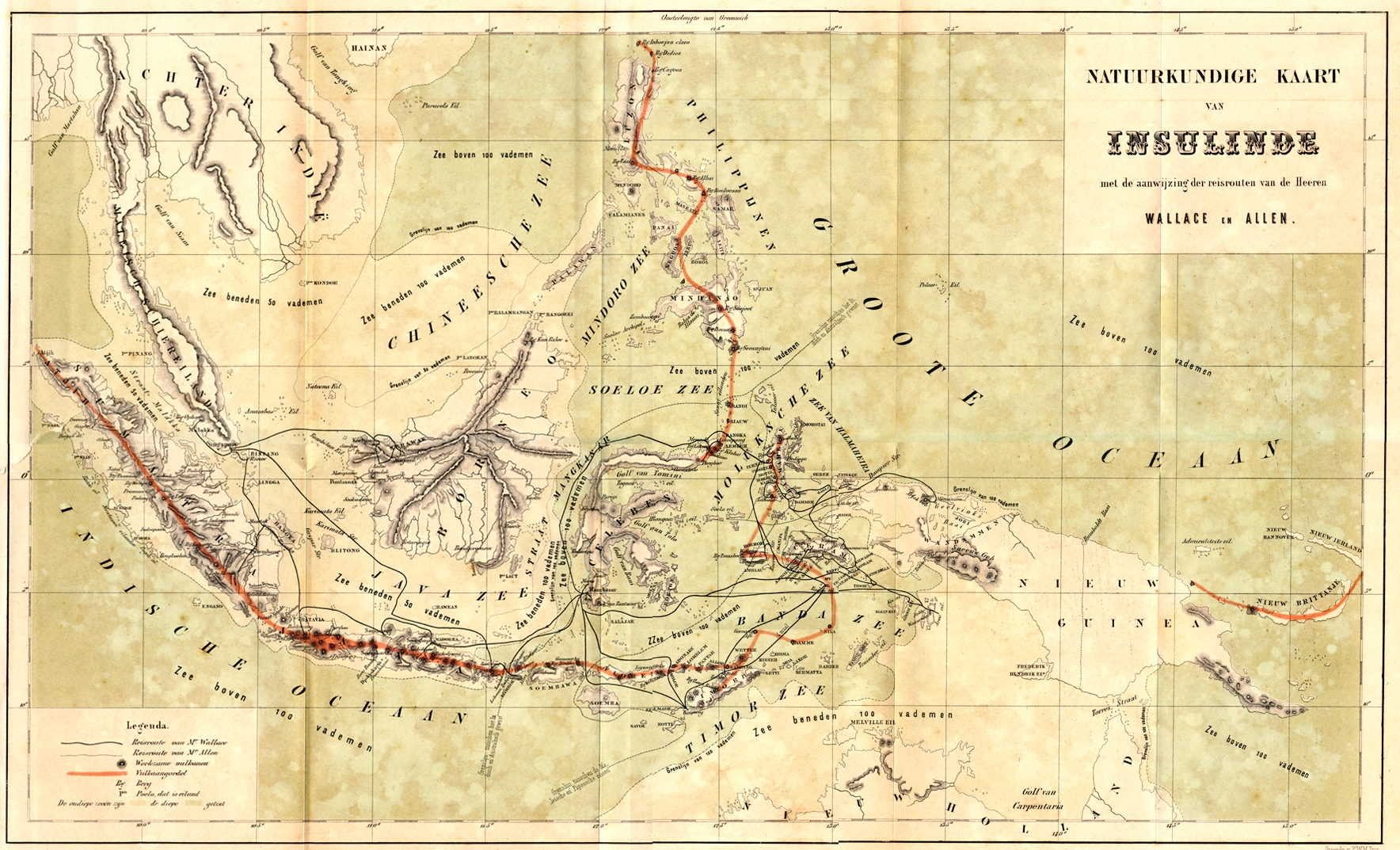|
Fisherian Runaway
Fisherian runaway or runaway selection is a sexual selection mechanism proposed by the mathematical biologist Ronald Fisher in the early 20th century, to account for the evolution of ostentatious male ornamentation by persistent, directional female choice. An example is the colourful and elaborate peacock plumage compared to the relatively subdued peahen plumage; the costly ornaments, notably the bird's extremely long tail, appear to be incompatible with natural selection. Fisherian runaway can be postulated to include sexually dimorphic phenotypic traits such as behavior expressed by a particular sex. Extreme and (seemingly) maladaptive sexual dimorphism represented a paradox for evolutionary biologists from Charles Darwin's time up to the modern synthesis. Darwin attempted to resolve the paradox by assuming heredity for both the preference and the ornament, and supposed an "aesthetic sense" in higher animals, leading to powerful selection of both characteristics in subseque ... [...More Info...] [...Related Items...] OR: [Wikipedia] [Google] [Baidu] |
Mark Kirkpatrick
Mark A. Kirkpatrick is a theoretical population geneticist and evolutionary biologist. He currently holds the T. S. Painter Centennial Professorship in Genetics in the Department of Integrative Biology at the University of Texas at Austin. His research touches on a wide variety of topics, including the evolution of sex chromosomes, sexual selection, and speciation. Kirkpatrick is the co-author, along with Douglas J. Futuyma, of a popular undergraduate evolution textbook. He is a member of the United States National Academy of Sciences. Education Kirkpatrick earned an undergraduate degree in biology from Harvard University in 1978 and a Ph.D. from the University of Washington in 1983. His doctoral advisor was Montgomery Slatkin. Research Kirkpatrick’s research focuses on fundamental questions in theoretical evolutionary genetics. He has studied the evolution of female mating preferences from a population genetic perspective and, in addition to Russell Lande, formally model ... [...More Info...] [...Related Items...] OR: [Wikipedia] [Google] [Baidu] |
Peacock Flying
Peafowl is a common name for two bird species of the genus ''Pavo (genus), Pavo'' and one species of the closely related genus ''Afropavo'' within the tribe Pavonini of the family Phasianidae (the pheasants and their allies). Male peafowl are referred to as peacocks, and female peafowl are referred to as peahens. The two Asiatic species are the blue or Indian peafowl originally from the Indian subcontinent, and the green peafowl from Southeast Asia. The third peafowl species, the Congo peafowl, is native only to the Congo Basin. Male peafowl are known for their piercing calls and their extravagant plumage. The latter is especially prominent in the Asiatic species, which have an eye-spotted "tail" or "train" of covert feathers, which they display as part of a Courtship (animals), courtship ritual. The functions of the elaborate iridescent coloration and large "train" of peacocks have been the subject of extensive scientific debate. Charles Darwin suggested that they served to ... [...More Info...] [...Related Items...] OR: [Wikipedia] [Google] [Baidu] |
Exponential Growth
Exponential growth occurs when a quantity grows as an exponential function of time. The quantity grows at a rate directly proportional to its present size. For example, when it is 3 times as big as it is now, it will be growing 3 times as fast as it is now. In more technical language, its instantaneous rate of change (that is, the derivative) of a quantity with respect to an independent variable is proportional to the quantity itself. Often the independent variable is time. Described as a function, a quantity undergoing exponential growth is an exponential function of time, that is, the variable representing time is the exponent (in contrast to other types of growth, such as quadratic growth). Exponential growth is the inverse of logarithmic growth. Not all cases of growth at an always increasing rate are instances of exponential growth. For example the function f(x) = x^3 grows at an ever increasing rate, but is much slower than growing exponentially. For example, w ... [...More Info...] [...Related Items...] OR: [Wikipedia] [Google] [Baidu] |
Peacock Courting Peahen
Peafowl is a common name for two bird species of the genus ''Pavo (genus), Pavo'' and one species of the closely related genus ''Afropavo'' within the tribe Pavonini of the family Phasianidae (the pheasants and their allies). Male peafowl are referred to as peacocks, and female peafowl are referred to as peahens. The two Asiatic species are the blue or Indian peafowl originally from the Indian subcontinent, and the green peafowl from Southeast Asia. The third peafowl species, the Congo peafowl, is native only to the Congo Basin. Male peafowl are known for their piercing calls and their extravagant plumage. The latter is especially prominent in the Asiatic species, which have an eye-spotted "tail" or "train" of covert feathers, which they display as part of a Courtship (animals), courtship ritual. The functions of the elaborate iridescent coloration and large "train" of peacocks have been the subject of extensive scientific debate. Charles Darwin suggested that they served to ... [...More Info...] [...Related Items...] OR: [Wikipedia] [Google] [Baidu] |
The Genetical Theory Of Natural Selection
''The Genetical Theory of Natural Selection'' is a book by Ronald Fisher which combines Mendelian inheritance, Mendelian genetics with Charles Darwin's theory of natural selection, with Fisher being the first to argue that "Mendelism therefore validates Darwinism" and stating with regard to mutations that "The vast majority of large mutations are deleterious; small mutations are both far more frequent and more likely to be useful", thus refuting orthogenesis. First published in 1930 by Oxford University Press#Clarendon Press, The Clarendon Press, it is one of the most important books of the Modern synthesis (20th century), modern synthesis, and helped define population genetics. It had been described by James F. Crow, J. F. Crow as the "deepest book on evolution since Darwin". It is commonly cited in biology books, outlining many concepts that are still considered important such as Fisherian runaway, Fisher's principle, Reproductive value (population genetics), reproductive value, ... [...More Info...] [...Related Items...] OR: [Wikipedia] [Google] [Baidu] |
Secondary Sexual Character
A secondary sex characteristic is a physical characteristic of an organism that is related to or derived from its sex, but not directly part of its reproductive system. In humans, these characteristics typically start to appear during puberty—and include enlarged breasts and widened hips of females, facial hair and Adam's apples on males, and pubic hair on both. In non-human animals, they can start to appear at sexual maturity—and include, for example, the manes of male lions, the bright facial and rump coloration of male mandrills, and horns in many goats and antelopes. Secondary sex characteristics are particularly evident in the sexually dimorphic phenotypic traits that distinguish the sexes of a species. In evolution, secondary sex characteristics are the product of sexual selection for traits that show fitness, giving an organism an advantage over its rivals in courtship and in aggressive interactions. Many characteristics are believed to have been established by a ... [...More Info...] [...Related Items...] OR: [Wikipedia] [Google] [Baidu] |
Alfred Russel Wallace
Alfred Russel Wallace (8 January 1823 – 7 November 1913) was an English naturalist, explorer, geographer, anthropologist, biologist and illustrator. He independently conceived the theory of evolution through natural selection; his 1858 paper on the subject was published that year On the Tendency of Species to form Varieties; and on the Perpetuation of Varieties and Species by Natural Means of Selection, alongside extracts from Charles Darwin's earlier writings on the topic. It spurred Darwin to set aside the Natural Selection (manuscript), "big species book" he was drafting and to quickly write an Abstract (summary), abstract of it, which was published in 1859 as ''On the Origin of Species''. Wallace did extensive fieldwork, starting in the Amazon River basin. He then did fieldwork in the Malay Archipelago, where he identified the faunal divide now termed the Wallace Line, which separates the Indonesian archipelago into two distinct parts: a western portion in which the ani ... [...More Info...] [...Related Items...] OR: [Wikipedia] [Google] [Baidu] |
The Descent Of Man, And Selection In Relation To Sex
''The Descent of Man, and Selection in Relation to Sex'' is a book by English naturalist Charles Darwin, first published in 1871, which applies evolutionary theory to human evolution, and details his theory of sexual selection, a form of biological adaptation distinct from, yet interconnected with, natural selection. Darwin used the word "descent" to mean lineal descendant of ancestors. The book discusses many related issues, including evolutionary psychology, evolutionary ethics, evolutionary musicology, differences between human races, differences between sexes, the dominant role of women in mate choice, and the relevance of the evolutionary theory to society. Publication As Darwin wrote, he sent chapters to his daughter Henrietta for editing to ensure that damaging inferences could not be drawn, and also took advice from his wife Emma. The zoological illustrator T. W. Wood, (who had also illustrated Wallace's '' The Malay Archipelago'' (1869)), drew many of the figure ... [...More Info...] [...Related Items...] OR: [Wikipedia] [Google] [Baidu] |
Male And Female Pheasant
Male (symbol: ♂) is the sex of an organism that produces the gamete (sex cell) known as sperm, which fuses with the larger female gamete, or ovum, in the process of fertilisation. A male organism cannot reproduce sexually without access to at least one ovum from a female, but some organisms can reproduce both sexually and asexually. Most male mammals, including male humans, have a Y chromosome, which codes for the production of larger amounts of testosterone to develop male reproductive organs. In humans, the word ''male'' can also be used to refer to gender, in the social sense of gender role or gender identity. Overview The existence of separate sexes has evolved independently at different times and in different lineages, an example of convergent evolution. The repeated pattern is sexual reproduction in isogamous species with two or more mating types with gametes of identical form and behavior (but different at the molecular level) to anisogamous species with gametes o ... [...More Info...] [...Related Items...] OR: [Wikipedia] [Google] [Baidu] |
Evolution (journal)
''Evolution: International Journal of Organic Evolution'', is a monthly scientific journal In academic publishing, a scientific journal is a periodical publication designed to further the progress of science by disseminating new research findings to the scientific community. These journals serve as a platform for researchers, schola ... that publishes significant new results of empirical or theoretical investigations concerning facts, processes, mechanics, or concepts of evolutionary phenomena and events. ''Evolution'' is published by Oxford Academic (formerly by Wiley) for the Society for the Study of Evolution. Its current editor-in-chief is Jason Wolf of the University of Bath, United Kingdom. Former editors-in-chief The journal was founded soon after the Second World War. Its first editor was the systematic ornithologist Ernst Mayr. * Ruth Geyer Shaw, July 2013 – 2017 * Daphne Fairbairn, 2010 – June 2013 References External links * at Oxford AcademicForm ... [...More Info...] [...Related Items...] OR: [Wikipedia] [Google] [Baidu] |
Sexy Son Hypothesis
The sexy son hypothesis in evolutionary biology and sexual selection, proposed by Patrick J. Weatherhead and Raleigh J. Robertson of Queen's University in Kingston, Ontario in 1979, states that a female's ideal mate choice among potential mates is one whose genes will produce males with the best chance of reproductive success. This implies that other benefits the father can offer the mother or offspring are less relevant than they may appear, including his capacity as a parental caregiver, territory and any nuptial gifts. Fisher's principle means that the sex ratio (except in certain eusocial insects) is always near 1:1 between males and females, yet what matters most are her "sexy sons'" future breeding successes, more likely if they have a promiscuous father, in creating large numbers of offspring carrying copies of her genes. This sexual selection hypothesis has been researched in species such as the European pied flycatcher. Context Female mating preferences are widely r ... [...More Info...] [...Related Items...] OR: [Wikipedia] [Google] [Baidu] |







